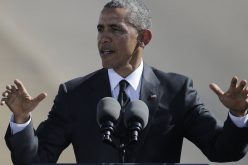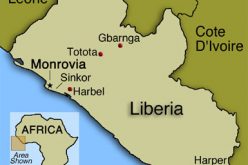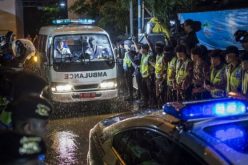De Blasio rolls out opioid plan in South Bronx neighborhood where Daily News chronicled heroin use

 Mayor de Blasio rolled out a plan aimed at beating back the opioid epidemic in the South Bronx just blocks from a once-notorious shooting gallery where the struggle of addicts was chronicled by the Daily News.
Mayor de Blasio rolled out a plan aimed at beating back the opioid epidemic in the South Bronx just blocks from a once-notorious shooting gallery where the struggle of addicts was chronicled by the Daily News.
“The Bronx has a history of dealing with some of the toughest challenges in this city but not getting the support it deserved. And that is part of why we still have a lot of work to do here,” de Blasio said Wednesday at a press conference in the Melrose neighborhood. The South Bronx has the highest rate of overdose deaths in the city twice the rate of the rest of the city, officials said. But de Blasio said he was rolling out a more “aggressive” approach to meet people where they are, involving local hospitals, peer advocates, harm reduction groups and clergy in the effort to help people struggling with addiction. That, he said, was based on efforts that had been successful in Staten Island a borough different from the South Bronx in many ways but also ravaged by opioid abuse.
“What we saw work in Staten Island can certainly work here,” de Blasio said.
De Blasio was just blocks from an abandoned railroad cut dubbed “the hole” that had long been home to heroin addicts and which the News wrote about last May. Hizzoner said spots like that are no longer being tolerated.
“Our strategy is not to allow those kind of abandoned areas to exist any longer,” he said, through work with the police, health, sanitation and homeless services departments to “disband” encampments.
“That was a notorious location that was there for years I think even decades, decades. So the challenge that now connects to this announcement today is OK, so you got those folks away from what was a horrible, dangerous, permanent trap of addiction – now they’re out in the broader community we have to reach them,” de Blasio said. “We have to reach them in ways that are different than what we did before.”
That’s because more “passive” approaches like having centers people could visit — have not worked, de Blasio said. Those who might not listen to a health department staffer may be receptive to advice from a former addict working as a peer advocate in harm reduction, or a member of the clergy.
“Everyone needs to be reached a different way, but what we will not tolerate, once we know of any place that has become a location, we’re not going to allow those kinds of locations to exist in this city,” de Blasio said. “That was something that was true in the 70s, the 80s, the 90s, even the last decade we don’t accept that.”
But Marty Rogers, 63, a neighborhood resident and founder of the Take Back the Hub Committee, said that while the city had cleaned up the abandoned railroad cut, it hadn’t opened new beds in treatment centers for those who had used the location. People have simply begun using drugs out in the open, he said.
“They were offered no Plan B, there was no alternative, there was no contingency plan — and these folks are on the bubble of existence, so they created their own Plan B,” Rogers said.
The result, he said, is people sleeping on cardboard in doorways, urinating and defecating on sidewalks, and leaving behind dozens of needles. During the press conference, Rogers shook a bottle he’d filled with needles and their orange caps. It took him 20 minutes to round them up on his way, he said.
Faces of opioid addiction in the Bronx
“What we see is people are out on the street, the reality we see is people are permitted to buy heroin, people are permitted to congregate and people are permitted to shoot up in public,” he said.
Rogers said the situation is unfair to both those using drugs who would prefer to sleep in a bed and use a bathroom and to neighborhood residents. He noted the frequency with which he finds needles in nearby St. Mary’s Park, and how he never sees any in Central Park.
“The reality is that what’s permitted down here in the South Bronx is not permitted in the rest of the City of New York,” he said. “It’s a whole other standard and it’s substandard. It’s beyond substandard.”
The mayor touted $8 million in funding for the Bronx plan, though most of it had been previously allocated as part of a $60 million citywide effort. One bit of new funding, he said, is an effort to continue cleaning up syringes and needles in the area, adding six new Parks Department workers to canvass South Bronx parks to clean up syringes.
SOURCE: NY DAILY NEWS









